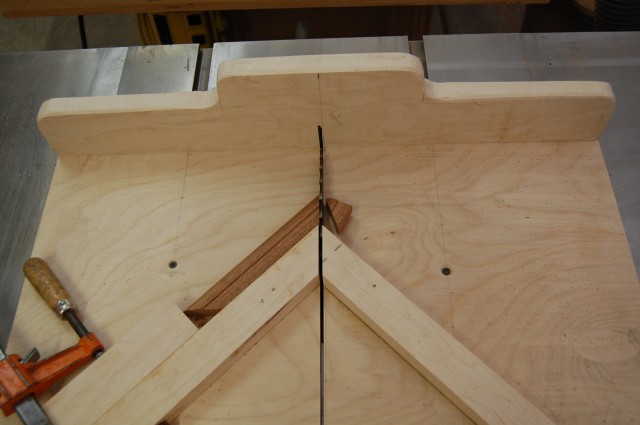The miter sled and precision miter gauge suggested by TX Turner work great for picture frames since your table saw's maximum depth of cut does not become a limiting factor.
To make mitered boxes--including shadow boxes with mitered corners--there is another technique that works well, which involves tilting your saw blade and using a crosscut sled.
If you have a digital angle gauge, you can use that to set your table saw's tilt angle. Otherwise, you can use a drafter's square, use the 45 degree angle on your combination square, or set your bevel gauge to exactly 45 degrees (or other appropriate angle) to accurately gauge your table saw's angle as you tilt the blade. Be sure to register against the table saw top and the plate of the saw blade (not the teeth). To make sure the blade is perfectly flush with your gauge, add backlighting behind the gauge and adjust the blade tilt angle until no light passes between the gauge and blade.
Note that you may want to use a separate sled for 90 degree crosscuts vs. angled cuts, since the zero-clearance kerf won't match up. On many saws, the blade is not centered between the miter slots, so depending on your saw you may be able to rotate your existing crosscut sled 180 degrees and cut an angled kerf without interfering with the 90 degree kerf. If you do run the sled backwards, make sure to add any appropriate safety features to the other end, as well.
